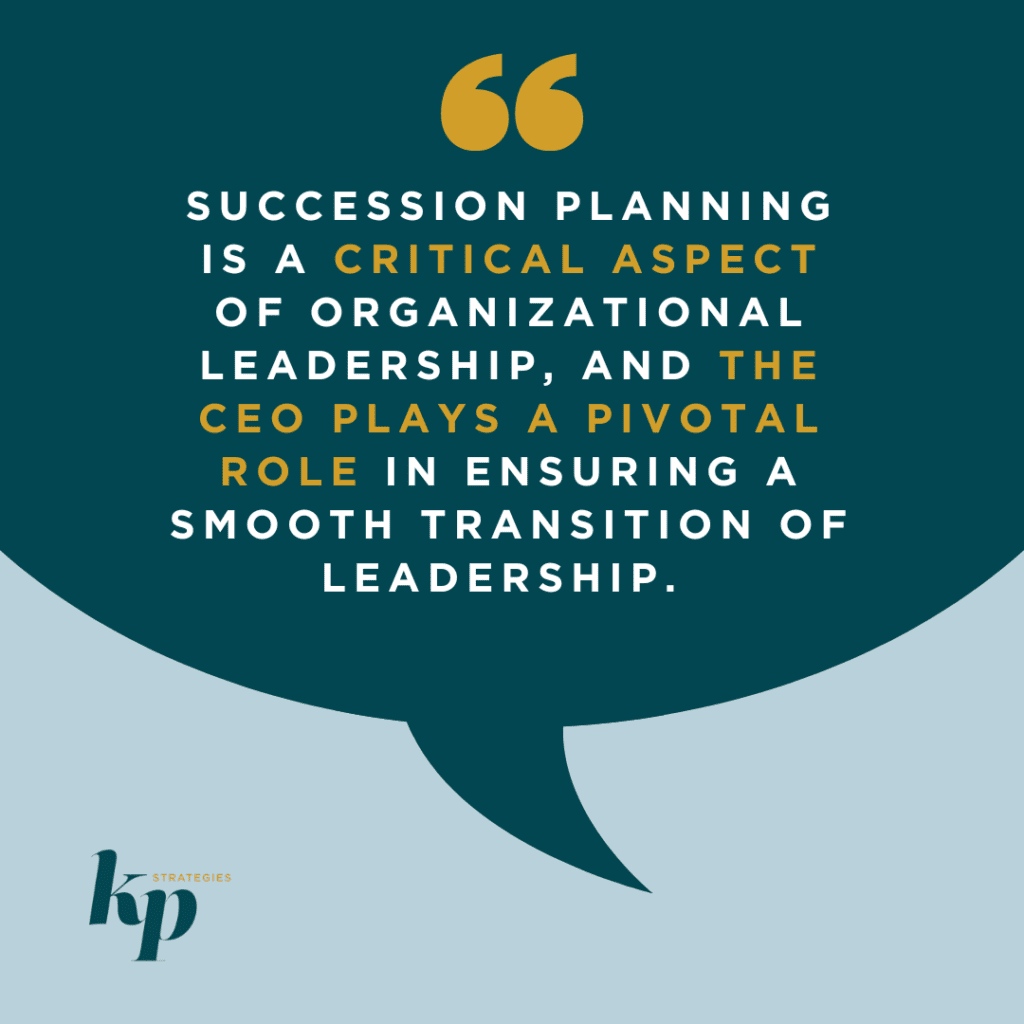Succession planning is not just a buzzword—it’s a critical aspect of organizational leadership that ensures continuity and long-term success. As the CEO, you play a pivotal role in driving this process and setting the stage for seamless leadership transitions.
Here’s a comprehensive guide to the key responsibilities and best practices for CEOs in succession planning:

1. Have your Chief Human Resource Officer (CHRO) Establish a Succession Planning Framework: Develop a comprehensive framework that aligns with the organization’s strategic goals and values, laying the foundation for effective succession planning.
2. Identifying Key Leadership Positions: Work closely with executive leadership to identify critical roles that require succession planning, including key C-suite positions and strategic roles essential for organizational success.
3. Talent Assessment and Development: Have the CHRO oversee the assessment of internal talent, identifying high-potential employees who could be groomed for leadership roles. Develop programs and initiatives to nurture and develop leadership skills within the organization.
4. Leadership Competency Models: Have the CHRO define leadership competency models, outlining the skills, qualities, and characteristics required for success in leadership positions.
5. Creating a Leadership Pipeline: Ensure the existence of a robust leadership pipeline by providing opportunities for potential leaders to gain experience and exposure to different aspects of the business.
6. Mentoring and Coaching: Support mentoring and coaching programs to prepare potential successors for increased responsibilities, either personally or through delegated leadership.
7. External Talent Assessment: Have CHRO and executive leadership assess [took out a] external talent and identify potential candidates who could fill critical leadership roles if necessary.
8. Transparency and Communication: Foster transparency in the succession planning process, communicating its importance to employees and creating a culture of continuous development.
9. Monitoring Progress: Work with CHRO to regularly review and monitor the progress of the succession planning program, making adjustments as needed to address changing organizational needs and goals.
10. CEO Succession Planning: Participate in and oversee the succession planning process for your own position in collaboration with the board of directors.
11. Board Involvement: Engage with the board of directors to keep them informed about the organization’s succession planning efforts and ensure alignment with the overall corporate strategy.
By taking a proactive approach to succession planning, you contribute to the long-term sustainability and success of the organization, ensuring a smooth transition of leadership and maintaining continuity in achieving strategic objectives.